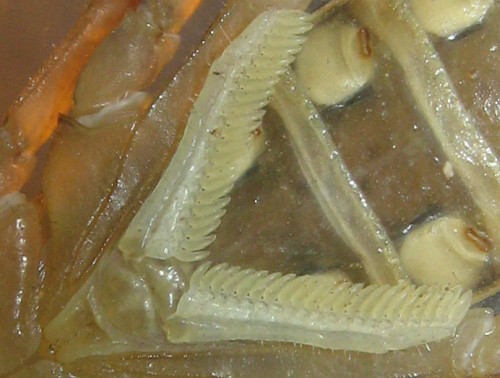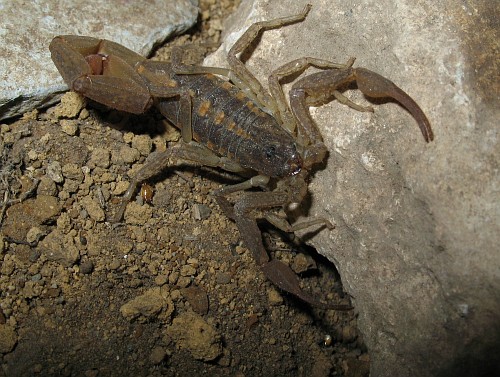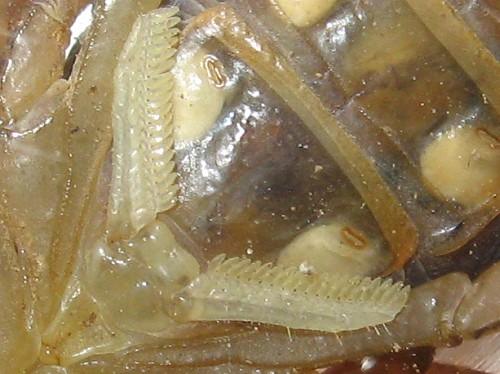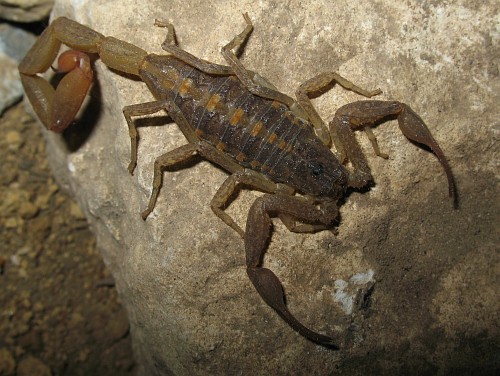

In the evening I decided to count the pectinal teeth of both specimen of Centruroides orizaba I had wild collected last Saturday near the town of Acultzingo, Veracruz. I was already sure that one specimen was male, and the other female, but not 100% sure that both are Centruroides orizaba.

In the past I had used a scanner to get an image of the underside of a scorpion but since my digital photo camera, a Canon A640, has a good macro mode, I decided to take photos trough a glass dish, like I had done in order to sex a Pandinus imperator, hoping the resolution would be good enough to provide an accurate count with this much smaller species. And after getting the flash setting of the camera right I was able to make at least one good photo of the underside of each scorpion.
In the above photo you can see the underside of an adult male Centruroides orizaba. The pectinal tooth count is for both combs 21, which agrees with the data given in an article written by Luis F. de Armas and Eliézer Martín-Frías. Of the 20 male specimen they researched, 7 had a pectinal tooth count of 21 (arithmetic mean: 20.9, standard deviation: 1.07).

The same technique was used to make photos of the underside of a female Centruroides orizaba. A crop out of the best photo is given below. The pectinal tooth count is for both combs 18, which again agrees with Armas and Martín-Frías. Of the 16 female specimen they researched, 6 had a pectinal tooth count of 18 (arithmetic mean: 18.87, standard deviation: 0.80).

Since there is overlap in the pectinal tooth count for males and females, for example Armas and Martín-Frías reported 6 females and 2 males each having a count of 19, and 4 females and 5 males both having a count of 20, the pectinal tooth count might not be conclusive in sexing. In this case, there was no doubt. First, the count for both specimen was outside the overlap. Second: notice how the combs of the first photo (male) are longer compared to the combs in the third photo (female), which agrees with the sex of both specimen based on pectine count.

Third: compare the photo above with the photo below, both taken today, in the afternoon. Notice how the tail segments of the male are much more enlongated compared to the tail segments of the female. This is clearly visible in the first tail segment of each. And finally, notice how the body of the female is more round compared to the enlongated body of the male.

Since both specimen were found hiding under the same stone, the male on the dirt, the female on the underside of the stone, it might be very well the case that the female is gravid. In a few weeks, when the scorpions are settled and well-fed, I will put the male inside the enclosure of the female and see if they will mate. If not, a reason might be that the female is already pregnant.